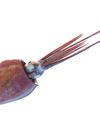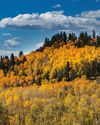
The Arctic has a reputation for frigid temperatures and dark, icy winters. These extreme conditions are allocated to disproportionately Earth's poles, but why is this? These cold traps are created by an incessant vortex of cold air that spins anti-clockwise around the planet in the atmosphere above the Antarctic and Arctic. These low-pressure bands of air are called the polar vortex.
Most of the time, the Arctic polar vortex stays near the pole. But its strength is always changing, causing its border to alter in shape and size. When it edges closer to the equator, the regions below it experience sudden gusts of wind. At the edge of a polar vortex is a jet stream. This circulation of air is usually lower in altitude and latitude than the vortex, and its speed is controlled by the temperature difference of the surrounding air, as well as the rotation of Earth. When the jet stream aligns with the vortex at the same latitude, the cold air is trapped at the pole and the vortex increases in strength.
DOUBLE TROUBLE
This story is from the Issue 176 edition of How It Works UK.
Start your 7-day Magzter GOLD free trial to access thousands of curated premium stories, and 9,000+ magazines and newspapers.
Already a subscriber ? Sign In
This story is from the Issue 176 edition of How It Works UK.
Start your 7-day Magzter GOLD free trial to access thousands of curated premium stories, and 9,000+ magazines and newspapers.
Already a subscriber? Sign In

INCREDIBLE SOLAR SYSTEM CRATERS
Why these spectacular craters carved out by past impact events are among the most widespread and distinctive geological features in the Solar System

HOW NORTH AMERICA'S GREAT LAKES FORMED
The world's largest freshwater system comprises five immense interconnected lakes, carved into Earth by glaciers

BUILDING THE WORLD'S DEEPEST CAR PARK
Australia's most famous landmark is often marvelled at from ground level, but its innovative spiral substructure is a hidden gem

FINDING THE COLOSSAL SQUID
This elusive creature spawned a legend of a deep-sea monster that endured for centuries

Octopuses burn more calories changing colour than you do on a 23 minute run
For octopuses, changing colour burns about as many calories as a human on a 23-minute run. Octopuses are masters of disguise, changing colour at the drop of a hat to startle predators and hide from prey.
The world's first silicon-anode battery could revolutionise electronic vehicles
A ceramic battery manufacturer has unveiled a solid-state battery concept that can be charged from 5 to 60 per cent capacity in just five minutes, giving future electric vehicles (EVS) a 186-mile range in the time it takes to order a coffee.

New technology gives AI the power to feel surfaces
Scientists have given artificial intelligence (AI) the capacity to 'feel' surfaces for the first time, opening up a new dimension for deploying the technology in the real world.

Visit Plane Earth 2125
How might our world have transformed under the strain of climate change 100 years from now?

The world's largest organism may have been growing for 80,000 years
Pando, an enormous quaking aspen that spans more than 40 hectares in Utah, is not only one of the largest known organisms on Earth, it's also one of the oldest.

Scientists detect the most powerful cosmic rays ever
Scientists have detected the most energetic cosmic rays ever discovered, and they're being produced by mysterious sources relatively close to Earth.